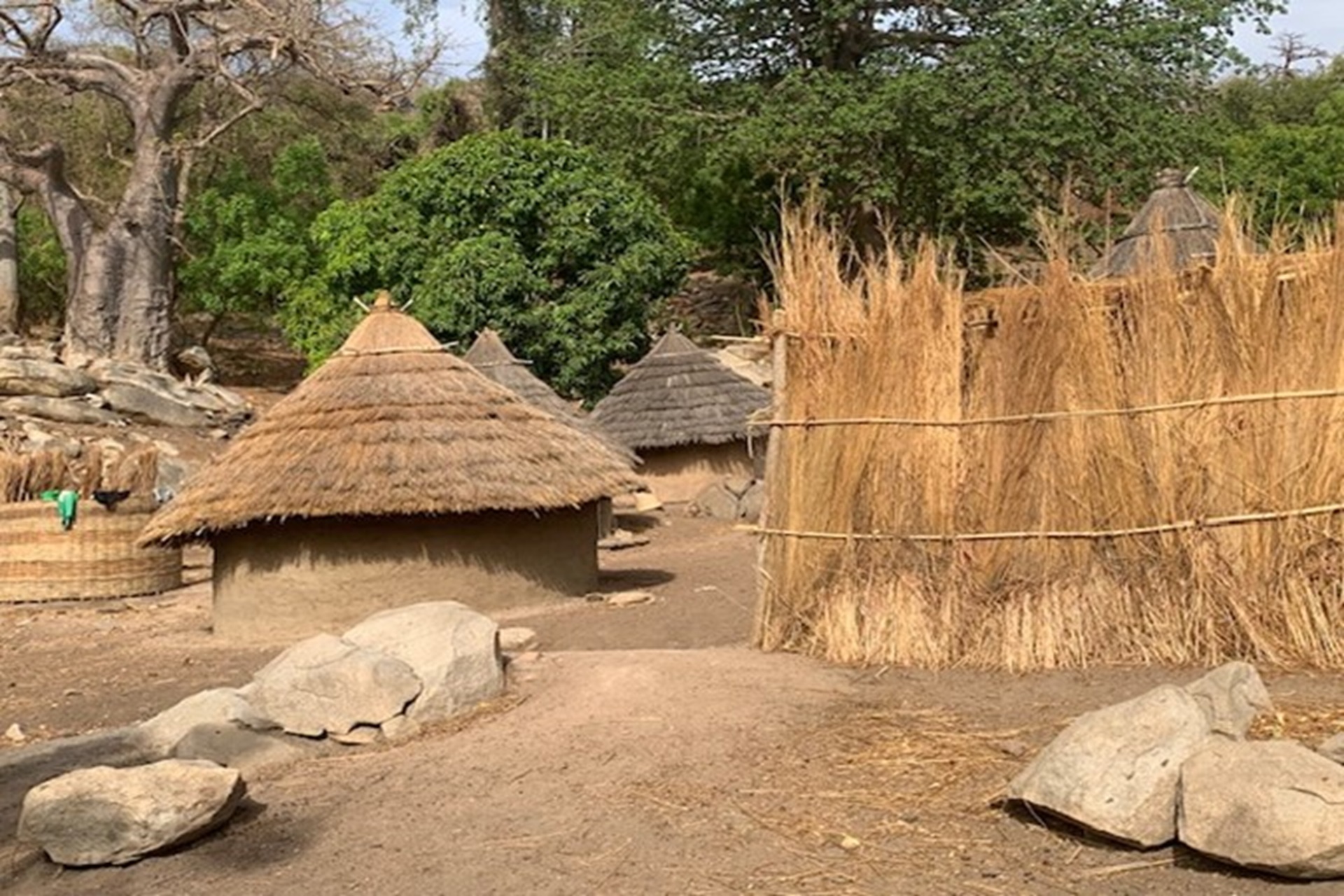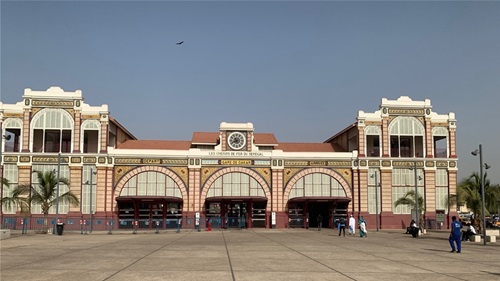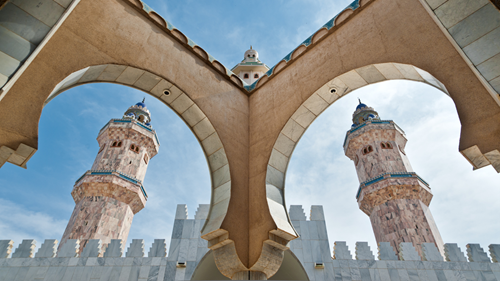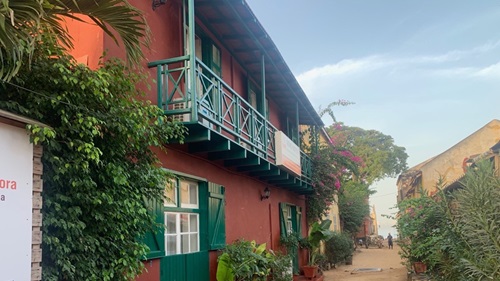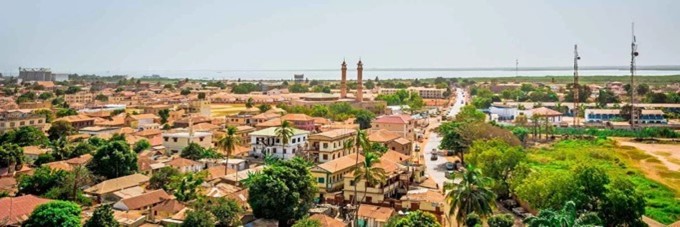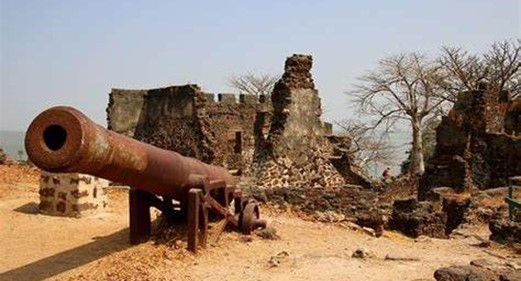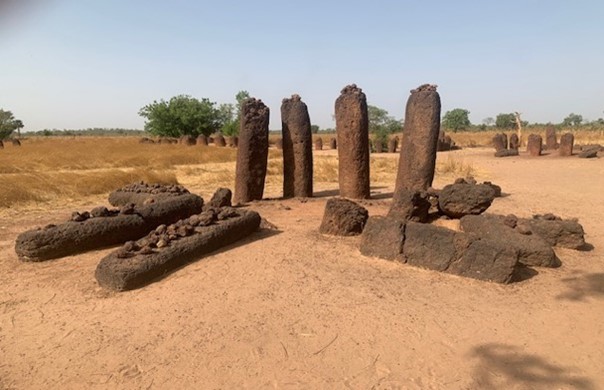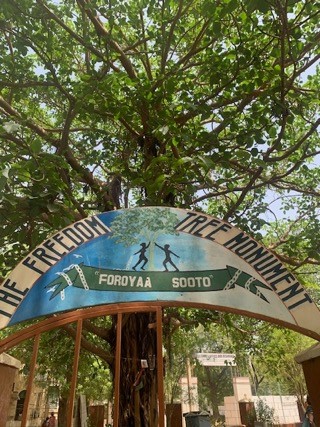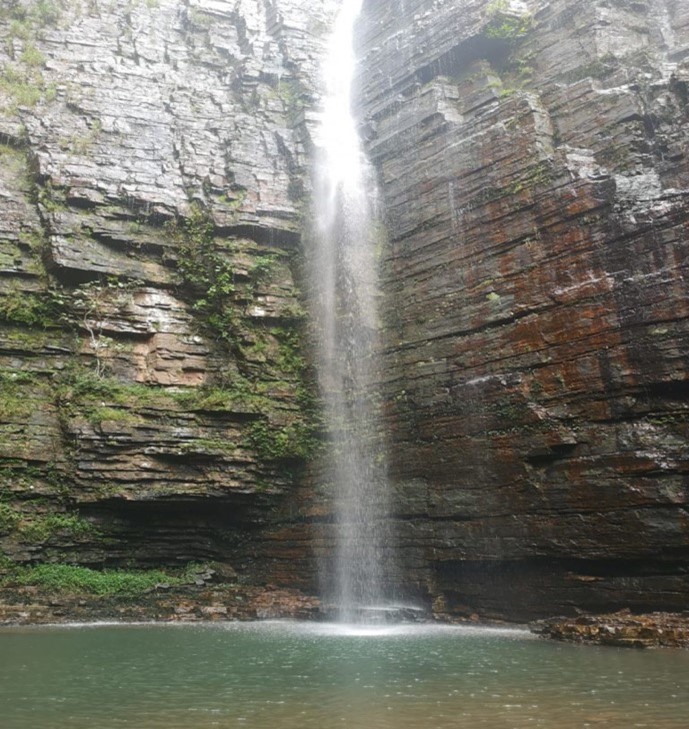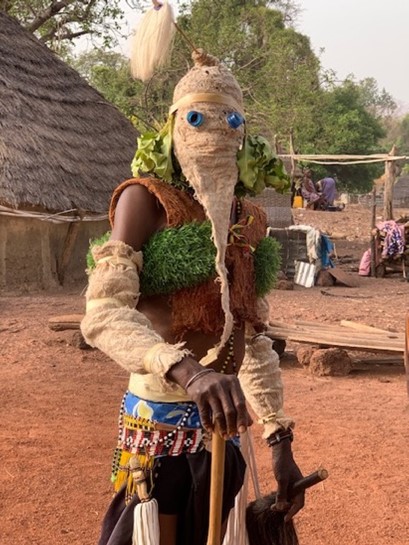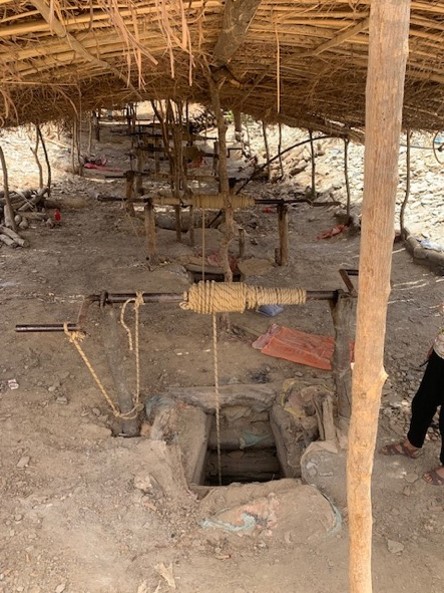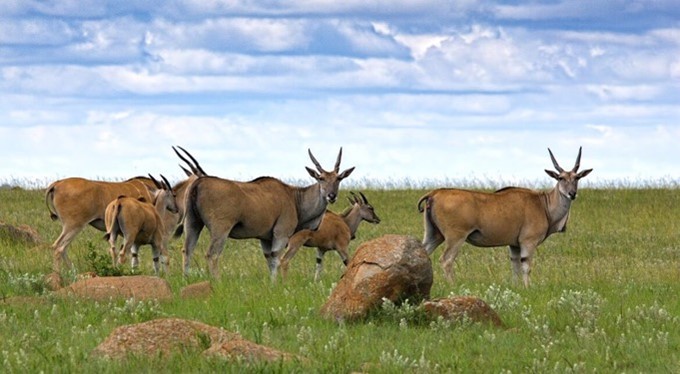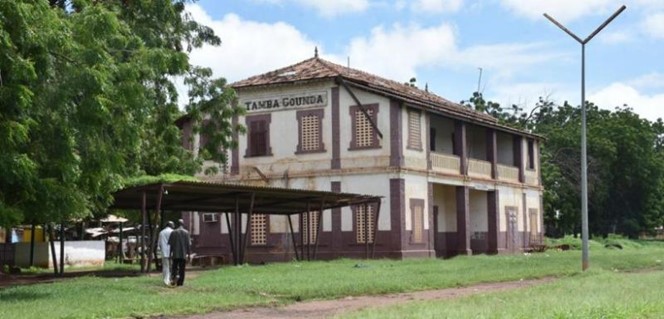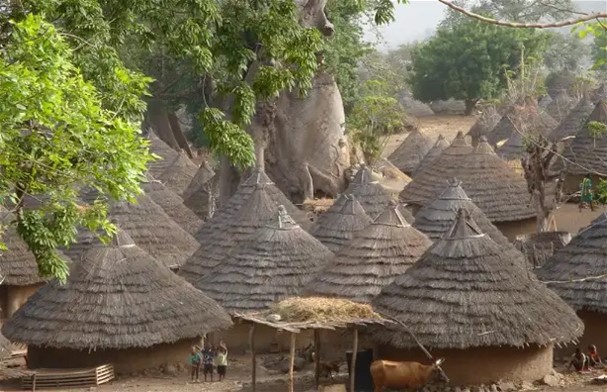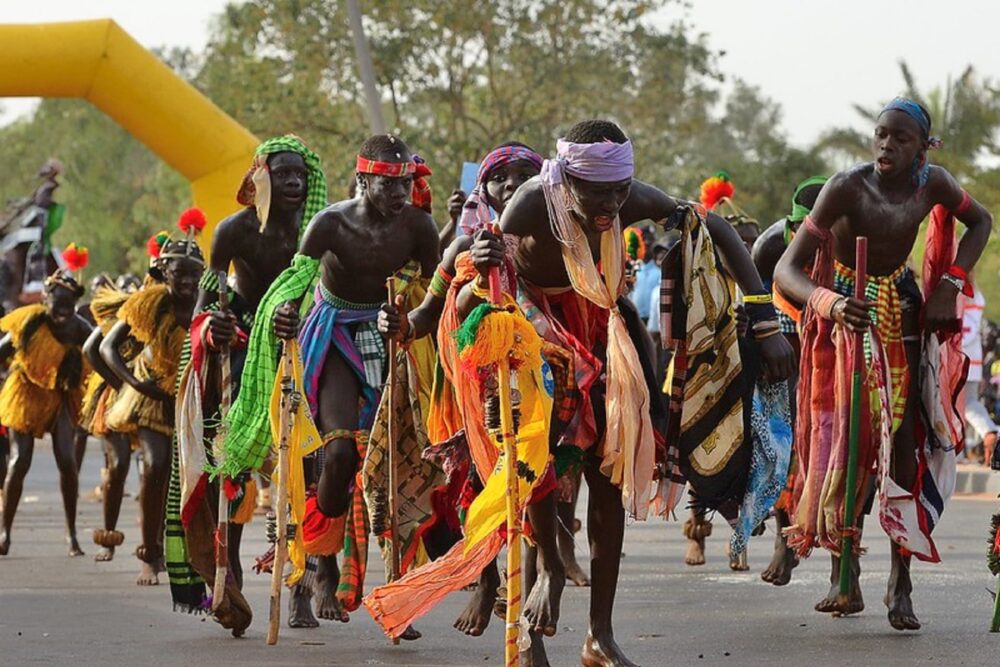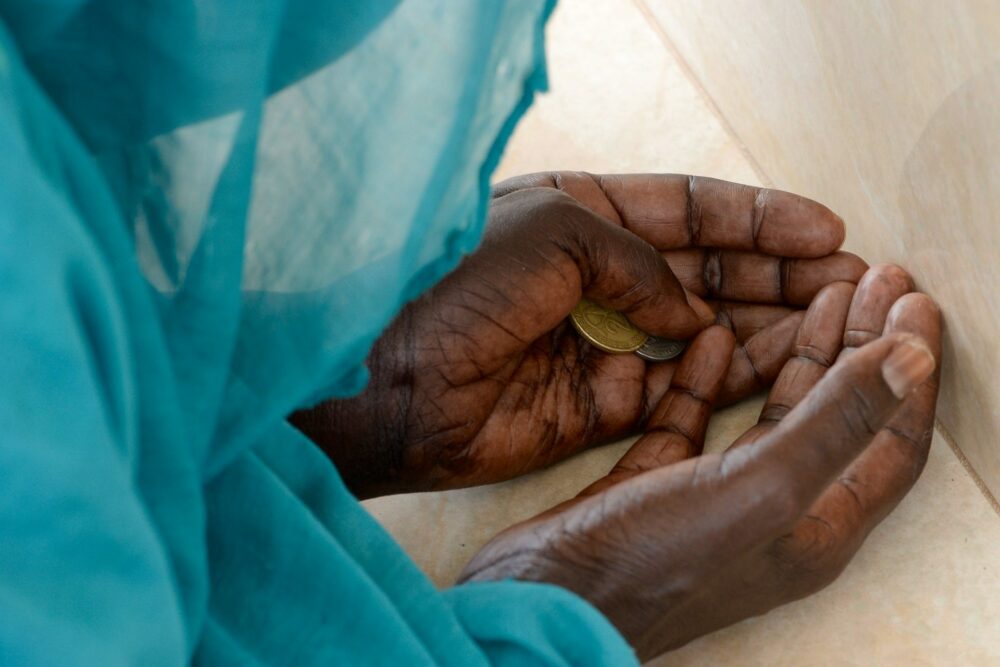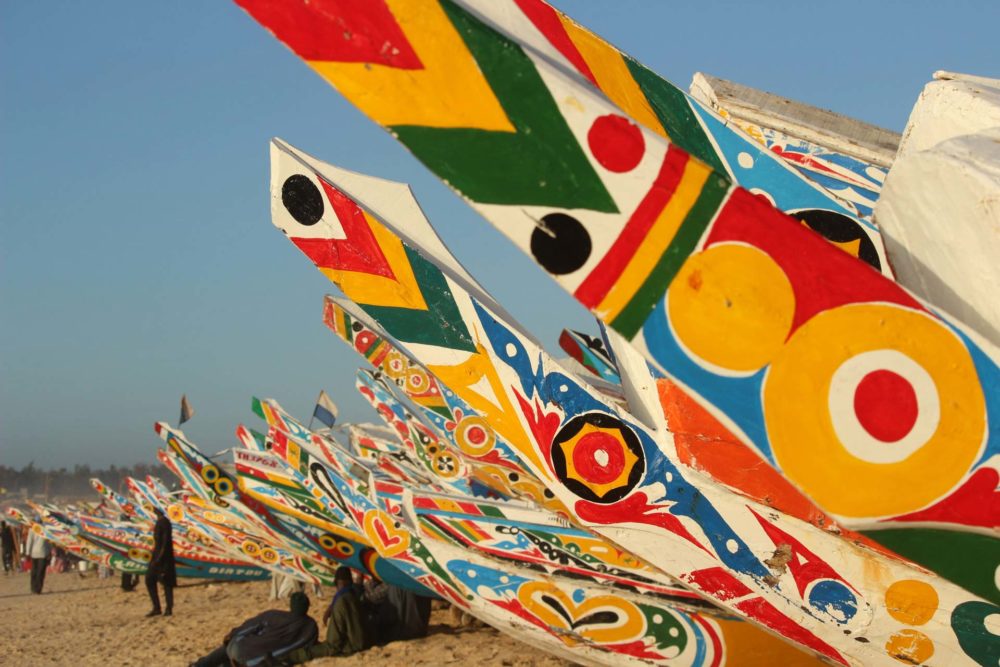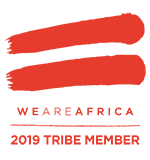Description
SENEGAL & GAMBIA
A unique itinerary through Senegal and The Gambia to learn about an ever-changing climate and cultural ecosystems. From the vibrant metropolis of Dakar to the villages of the Bassari region and The Gambia. Through the sacred city of Touba, center of the most powerful Muslim Marabu’ brotherhood to the animist tribes of the south in the more intact Senegal and Gambia regions. We will travel from The Gambia’s eastern border across the country to the modern capital Banjul.
NATURE
We move through a variety of natural environments such as savanna, estuaries, and mangrove forests.
HISTORY, PREHISTORY & TIMELESS VILLAGES
We will experience encounters with “timeless” peoples such as shepherds and remote villages. We will discover a site with millennia-old mysterious monoliths.
ART, CULTUR & MUSIC
In the southeast, Bassari and Bedick will be a unique opportunity to experience traditions. We discover the Bassari region, declared a UNESCO World Heritage Site in 2012. A unique itinerary will allow us to traverse and explore the Gambia from east to west in its lesser known but more authentic areas, ending with the beautiful tropical beaches of Banjul and a possible beach extension.
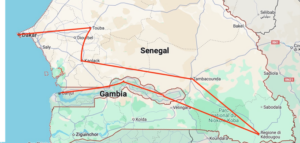
Day 1: DAKAR, the capital – Senegal
Arrival in Dakar and transfer to the hotel.
Day 2: DAKAR, contemporary metropolis & Gorée. From Dakar to Gorée (transfers in town and ferry)
Dakar is located at the end of the Cape Verde peninsula, the western-most point on the African continent and has a population of about 2.4 million people.
Nowdays a large and vibrant African metropolis it was the cultural and intellectual capital of the former French West Africa. The Senegal capital, is currently a window on contemporary art and music and the center of all kinds of creativity.
We will visit the Musée des Civilisations Noirs. Opened in December 2018, it is the realization of Léopold Sédar Senghor’s vision (the first president of independent Senegal, a poet, and Nobel Prize winner). The museum represents the historical and contemporary worldwide cultures, art, and soul of Black people, which he called Negritude.
We will also visit the Cathédrale Notre Dame. The project to build the Dakar cathedral was initiated in 1910 to pay tribute to African combatants; the Cathedral was finally built in Neo-Sudanese style, a style inspired by the Sahara and Sub-Sahara adobe mosque architecture, consecrated on 2 February 1936.
Arrival at Dakar port to board a ferry and spend a night in Gorée, the island where slaves used to be crammed before being shipped to the Americas. Some restored buildings remain to bear witness of those times.
The Portuguese were the first to establish a presence on Gorée in 1450 where they built a small stone chapel. After the decline of the slave trade from Senegal in the 1770s and 1780s, the island became an important port for the shipment of peanuts, Arabic gum, ivory, and other products of legitimate trade. Thanks to the nice breeze, and the many restaurants and shops, Gorée today has become a pleasant and trendy location. In the late afternoon and evening, when the tourists are gone, we will experience the real feeling of this special island.
Day 3: Tuba Brotherhood. From Gorèe to Kaolack (380 km – driving time 6 hrs).
In the morning transfer by ferry to Dakar and drive to the holy city of Touba.
In Touba we will discover the great sense of hospitality that characterizes African brotherhoods. The inhabitants follow the Muridi movement, and the holy city is almost a “state within a state” ruled by a caliph. The founder was a Sufi named Amhadou Bàmba Mbake.
Amhadou Bàmba founded Touba in 1887. The holy place remained a small isolated spot in nature until his death and burial at the site of the Great Mosque 40 years later. The Grand Mosque was finally completed in 1963, and since its inauguration the city has grown rapidly: from less than 5,000 in 1964, the population has grown to 529,000 in 2007.
The Mouridi have a great social and economic impact in Senegal: thanks to their peaceful (and African) vision of Islam, Muridism, with the other brotherhoods that follow the Marabout cult, has become the bastion that protects Senegal from radical Islam.
During the Grand Magal, the annual pilgrimage, the city is visited by four million pilgrims.
The Mourides welcome any interest in their traditions. However, because Tuba is a holy city, all visitors must accept traditional rules. Therefore, we must enforce a respectful dress code: no smoking, no drinking alcohol and no listening to music while visiting. If we follow these rules, we will be welcome. A Baye Fall, a member of a colorful branch of Muridism, will accompany us during the visit.
In the evening we will arrive in Kaolak.
Day 4: The Acacia route: From Kaolack to Tambacounda (270 km – 4,5 hrs)
In the morning after breakfast we will travel to Tambacounda.
This road will take us through landscapes characterized by acacias and baobabs. We will discover the beauty of the Senegalese savannah.
We will visit Kaffrine an important agricultural center, see local markets to taste fresh fruits and and appreciate local handicrafts.
In the evening we will reach Tambacounda. Even before the French came to colonize this territory there was already a Mandingo village. After the French conquest, the area became an important town. The French built a number of buildings, including the railway station, which still retains its charm today.
Visit the colorful market, the iron-framed railway station, Hôtel de la Gare and the Prefecture building.
Day 5: Niokolo Koba, from Tambacounda to Bassari region (220 km – 4 hrs)
Early morning safari in Niokolo Koba Park. Niokolo-Koba, with an area of about 9000 square kilometers, is the largest national park in West Africa as well as a UNESCO World Heritage Site.
Travelling to Kedougou. Along the way we will visit the village of Bantako gold diggers: using rudimentary methods they dig deep holes in the ground and lower themselves into them in hopes of finding the precious metal.
Arrive at our comfortable hotel in Kedougou where we will spend three nights using it as a base to visit one of the country’s most pristine regions and discover authentic tribal cultures.
Day 6: Bassari culture, Bassari region and Kedougou.
We discover the Bassari region, declared a UNESCO World Heritage Site. We will see the village of Ethiolo, the most sacred for the Bassari; start hiking in the surrounding area, and discover the traditions of this animist people, among green landscapes, and villages that we will reach through untraveled trails.
With luck we will see the Bassari mask dance.
The Bedik and Bassari peoples of Senegal represent a fascinating and unique reality, part of the Tenda language group. Their history of isolation has allowed the preservation of animist traditions and ancestral cultural practices, making them a special case in the Senegalese context.
Their enclosure in remote cliff areas has played a crucial role in keeping their customs intact. Despite the small size of their population, Bedik and Bassari continue to keep their traditions alive, especially in initiation rites, where the transition from childhood to adulthood is marked by ceremonies involving masks and spiritual representations.
These rites not only celebrate the entry into adult life, but also reflect the deep connection with the natural world, as all masks and costumes used are made from plant materials collected from sacred forests. The importance of the separation of the sexes in knowledge and spiritual practices highlights the complexity of their social structures.
Their culture, so rich and fascinating, offers valuable insights into how communities can endure and adapt over time while holding firm to their identity. We will have lunch in the camp of Balingo, an important connoisseur of the region.
On the way back we will visit Salémata. Salémata is the largest village in the area and a meeting point for the Bassari and Fulani people of the region.
Day 7: Bedik culture and Dindefelo Falls, Iwol and Dindefelo (30 km, 2 hrs)
The Bédik live in the Bandafassi area. It includes small mountains and valleys. Bédik villages consist of dense groups of thatched huts with sloping roofs. Because of their central role in Bédik life, the villages have an archaic organization of space and each is divided into two distinct parts: the upper and lower parts of the village.
The organization of huts in the village reflects the family unit, which is based on the iyanga (concession) in which, around each head of the family, his wives, their brothers, his sons and their wives gather.
Daily life for the Bédik, however, takes place in scattered hamlets and groups of temporary huts, mobile as needed, while the village is reserved for festivals and rituals and cannot be abandoned. We will visit Iwol, the most important Bédik village. We will also visit another much lesser known village, Angel.
In the afternoon we will travel to Dindefelo Waterfall. Located 35 kilometers from Kedougou and less than ten kilometers from Guinea, Dindefelo Waterfall is (in addition to a natural paradise) a mystical place for the local people.
A magical place not only because of its natural environment, but also because you can dive under a 100-meter-high waterfall.
The waterfall is located in the Dindefelo Natural Park. It is the highest in Senegal, 115 m. Dindefelo means “near the mountain” in Pulaar, the dialect of the Peul ethnic group.
In the afternoon, return to Kedougou.
Day 8: Senegal to Gambia. Knife dance. From Kedougou to Mansajang Kunda (300 km – 6 hrs)
Morning departure for a day-long transfer to The Gambia. From Kedougou we will travel to Verlingara and then arrive in the afternoon at Mansajang Kunda. After dinner in Mansajang Kunda we will witness a knife dance. Traditional music and West African cultural dances find an important expression in Gambian culture. From vibrant traditional dances to more modern dance style.
Each ethnic group has its own dance style ranging from the wild, dynamic and exuberant movements of the arms and body to the rhythmic pounding of the feet.
Day 9: Nature and history. From Mansajang Kunda to Janjanburehe e Wassu (180 km – driving and ferry – 6 hrs)
Moiving forward our itinerary until we reach Bansang 20 km before Janjanbureh on the bank of the Gambia River.
Here we will take a boat to reach the Baboon Islands. In the afternoon we will see chimpanzees, baboons and many birds. From Baboon Island by boat we will sail to Janjanbureh.
Originally founded as a British colonial settlement in 1832, Janjanbureh has deep historical significance in the narrative of the African diaspora.
From Janjanbureh we will travel to Wassu where we will spend the night within walking distance of the historic monoliths. In the evening we will meet a griot. The griot is a historian, a storyteller. He is the keeper of the collective memory of a people, a community or a family. In the griot caste, stories are passed down from father to son and mother to daughter.
Day 10: Prehistoric settlements. Wassu and Kassagne (180 km – 4 hrs)
Wassu is a UNESCO World Heritage Site, home to the enigmatic stone circles.
One of the most important monolithic sites. These circles date back over a thousand years and are evidence of the ancient civilizations that once thrived in the region.
In the afternoon we will travel to Kassagne where we will spend the night at AbCa’s Creek Lodge.
Day 11: Gambia’s historical period. Kunta Kinteh Island. ( speed boat and driving – 4 hrs)
This day takes us back to the period in Gambia’s history of the Atlantic slave trade. Slaves from all over West Africa were transported across the Atlantic Ocean to Europe and the Americas. James Island on the Gambia River became a major collection point, where slaves were sold and prepared for transport across the Atlantic.
During the day we will use a traditional Gambian motor boat. We will continue the journey into the creeks navigating through the mangroves, and continue on the main branch of the Gambia River. In two hours we will arrive at James Island. We will also be able to spot dolphins along the way.
Saint James Island, officially known as Kunta Kinteh Island, is a UNESCO World Heritage Site.
Afternoon transfer to Banjul.
Day 12: Banjul, the Capital.
Banjul is located on St Mary’s Island (Banjul Island), where the Gambia River enters the Atlantic Ocean. Visit to the National Museum, dedicated to different aspects of the country: from archaeology to recent history, art, music and photography.
Stop at Arch 22, a landmark of the country’s contemporary history. From the top, a view of the city.
The Royal Albert Market, on Liberation Avenue, is named after Queen Victoria’s husband, Prince Albert, and is a fascinating place to explore, consisting of three separate markets.
Day 13: Banjul, out.
Banjul extension: Option to extend the stay

